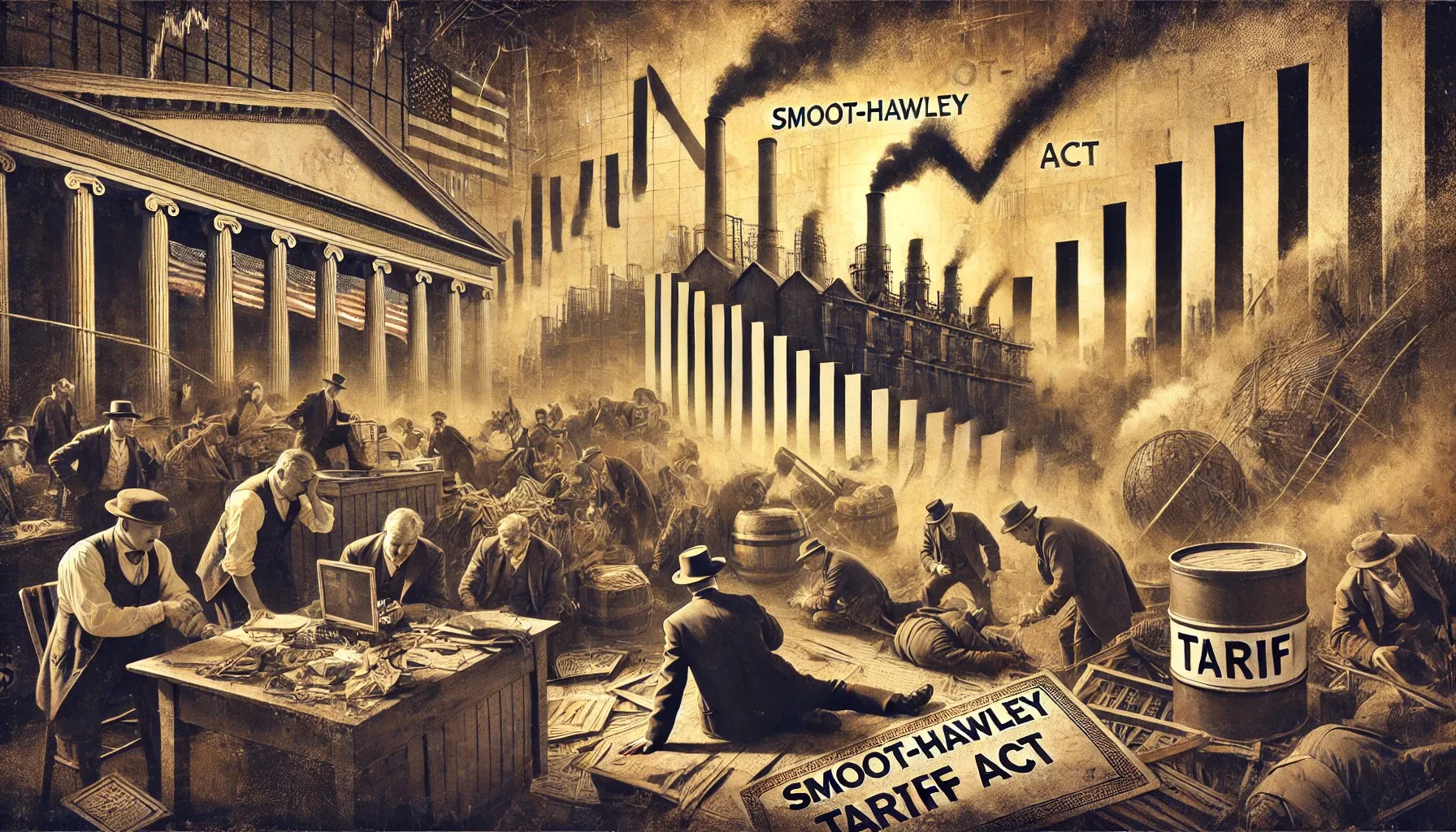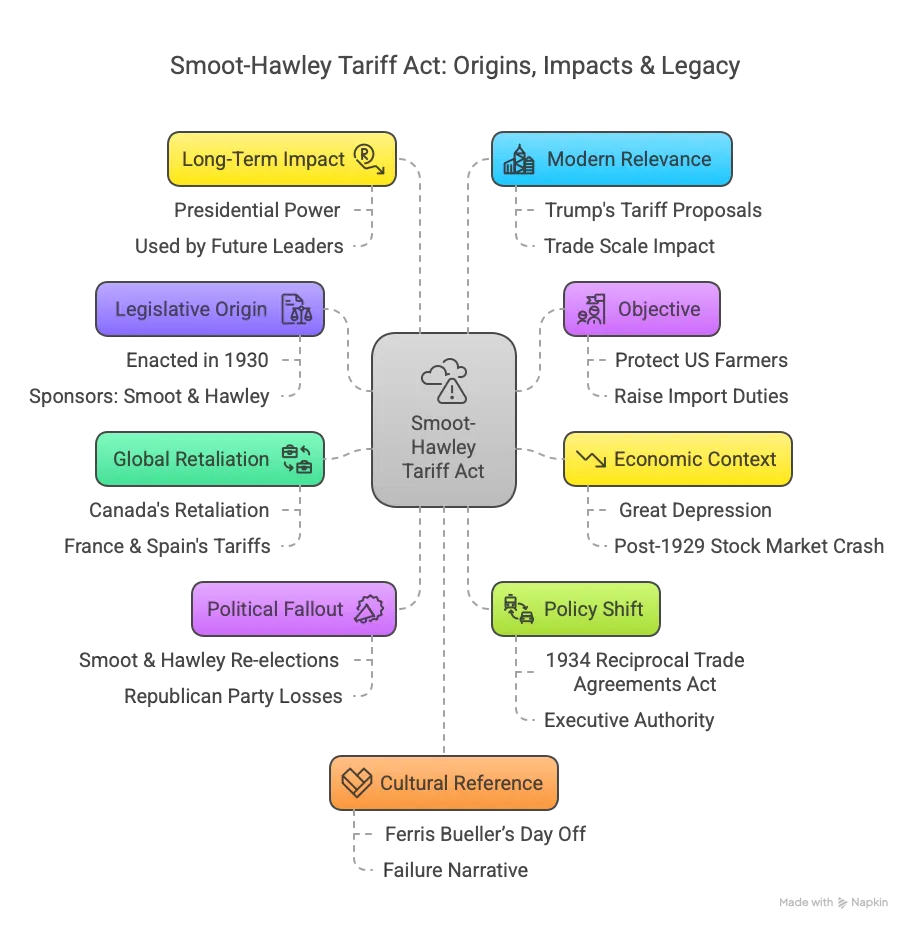UPSC
Indian Express Concise
Smoot-Hawley Tariff Act: Lessons from the Great Depression
Last Updated
4th April, 2025
Date Published
4th April, 2025
Share This Post With Someone

The Smoot-Hawley Tariff Act of 1930, a pivotal event in global economic history, offers critical insights into the consequences of protectionist policies. Its enactment during the Great Depression and its impact on international trade and diplomacy provide valuable lessons for understanding economic policy, trade relations, and their geopolitical ramifications, essential for aspirants preparing for competitive examinations.

Information in Points:
- Legislative Origin: Enacted on June 17, 1930, by the US Congress, the Smoot-Hawley Tariff Act was sponsored by Senator Reed Smoot (Utah) and Representative Willis Hawley (Oregon) to protect American farmers and businesses.
- Objective: Aimed to shield US farmers from foreign competition by raising import duties, initially focused on agriculture but expanded to cover industrial goods.
- Tariff Increase: Raised tariffs on over 20,000 imported goods, increasing the average duty by approximately 20%, with some rates reaching nearly 60% due to deflationary effects by 1932.
- Economic Context: Passed amid the Great Depression, following the 1929 stock market crash, as the US sought to bolster its economy, which was already faltering.
- Presidential Action: Signed into law by President Herbert Hoover despite opposition from over 1,000 economists who petitioned for a veto, highlighting potential economic risks.
- Global Retaliation: Triggered immediate retaliatory tariffs from trading partners; Canada targeted 16 US products (30% of US exports), while France and Spain taxed American automobiles.
- Trade Decline: US exports and imports dropped by 67% between 1929 and 1932; global trade fell by 66% from 1929 to 1934, exacerbating the economic downturn.
- Beggar-Thy-Neighbour Policy: Exemplified a strategy where one nation’s gain came at others’ expense, deepening global economic distress.
- Political Fallout: Both Smoot and Hawley lost their re-elections in 1932, reflecting public discontent; the Republican Party lost congressional majorities to Democrats.
- Policy Shift: In 1934, President Franklin D. Roosevelt signed the Reciprocal Trade Agreements Act, transferring tariff-setting authority to the executive and enabling bilateral trade deals to reduce tariffs.
- Long-Term Impact: Marked the end of Congress setting specific tariff rates, shifting power to the President, a framework later used by leaders like Donald Trump.
- Historical Debate: While not the sole cause of the Great Depression (preceded by the 1929 crash), it worsened the crisis by stifling trade and economic recovery.
- Modern Relevance: Cited in 2025 amid Trump’s tariff proposals, with experts like Douglas Irwin noting today’s larger trade scale (14% of US GDP vs. 4% in 1930) amplifies potential impacts.
- Cultural Reference: Featured in the 1986 film Ferris Bueller’s Day Off, where a teacher calls it a failure, embedding it in popular consciousness.
Glossary
- Smoot-Hawley Tariff Act: US legislation of 1930 raising import duties to protect domestic industries.
- Great Depression: Severe global economic downturn starting in 1929, worsened by trade barriers.
- Protectionism: Economic policy restricting imports to shield domestic industries.
- Retaliatory Tariffs: Counter-tariffs imposed by nations in response to trade barriers.
- Beggar-Thy-Neighbour: Policy benefiting one country at the expense of others.
- Reciprocal Trade Agreements Act: 1934 law shifting tariff authority to the US President for bilateral negotiations.
- Global Trade: Exchange of goods and services across nations, heavily impacted by tariffs.
- Stock Market Crash: 1929 event triggering the Great Depression, predating Smoot-Hawley.